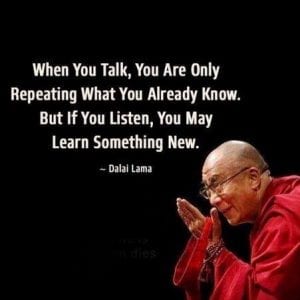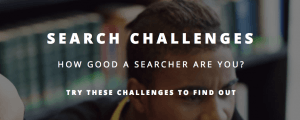Module 1- The Information Environment has taken me on a roller coaster of emotion, related tangents and rabbit holes whilst also allowing me a good amount of connections to my own life and experiences so far. Beginning with the history of the web was interesting because for me as it was not a story I knew and Tim Berners-Lee was not a name I knew. As someone who was born after the inception of the World Wide Web, to me the internet and the use of it felt sudden. Perhaps this is because I was one of the last of my friends to have access to the internet in my home? A thought that I later revisited upon watching Mimi Ito’s video ‘Why Connected Learning?’ after considering her point about social support as a main issue in the ever widening socio-economic gap, not the lack of resources or access to resources. It set me up to expect the unexpected and have an open and reflective mind going into the Module.
The relevance of the need for 21st Century skills; as discussed in John Seely’s video The Global One Room Schoolhouse: John Seely Brown, was so mind blowing and reassuring at the same time. I feel reassured with having already realized that times have drastically changed in terms of use of technology and this is why we need to change the way we approach teaching and our pedagogies. This is part of the reason I am here now studying in this course!
It also made me think about how at this point in time, at our brand new school, we are trying to map out protocols surrounding the use of certain apps that are so open-ended and flexible when used to their best capabilities…how can we create uniform standards of use around something that should be so flexible? Won’t it hinder our use of it and in turn the learning capabilities of our students? How do we find the balance? I feel concerned about this task but can hopefully bring some of what I have learned so far about the importance of fostering entrepreneurial learners to the task.
Helen Haste: Technology and Youth: Problem Solver vs Tool user, gave me connections back to John Seely. I thought back to Homo Faber, or Man as Maker; tinkering and playing to explore when Helen was talking about needing to teach our students to be Tool Users instead of just problem solvers. In order to harness the use of these 21st century skills, or tools, students need to be given proper chances to explore or tinker with resources and gather their own information. Not just be given a problem to solve and learn how to be passive individuals. We need collaboration in order to survive, I always say that my colleagues are some of my best resources.
Helen’s mention of dialogic vs dialetic reminded me of this quote from the Dalai Llama:
 Dialogic– As knowledge that is repeated.
Dialogic– As knowledge that is repeated.
Dialetic– As an act of listening to reasoned arguments from all sides and having an open-mindset to consider these arguments. It also takes the social and emotional capability to not take these arguments personally!
Managing ambiguity and managing emotion were two of the five competencies Helen referred to that stood out to me. In a non digital sense when reading a book and stopping before the ending, something I have done with my class this year and in the past, the reaction of some students is quite shocked and some emotions can run high. Resilience building and social-emotional regulation are the foundation for which todays youth need in order to build their 21st century skills. Guiding them to feel more okay with the not knowing part.
The biggest take away from these connections is that the world is changing faster than ever and our skills sets become arbitrary in these rapidly evolving environments if we are not constantly reassessing and re-honing them. Mind-sets and dispositions are as important as these skills. Innovation and imagination are needed now more than ever but with so many answers now at our fingertips the ‘knowledge assembly’ (Bawden 2008) that should be multi-faceted is becoming more linear and stagnant.
An article on NPR speaks of a study conducted by Stanford researchers showed shocking revelations that from a group of 7,800 participants, more than 80% of middle schoolers believed that sponsored content on websites and social media was a real news story. It also showed their gullibility in tweets by activists groups as not holding any bias. The issue being they weren’t being critical about what they were seeing or reading, they just believed it as fact. They didn’t question it. Another reason why we need to teach our young learners to be tool users and entrepreneurial learners.
I tried the Search Challenge and found the Elementary one difficult! Yahoo is not the most user friendly search engine in my opinion. I found how long it took to construct the Eiffel Tower LEGO model in 1.30 minutes with one refinement to my search. I then tried Google Search and it took me 16 seconds with one search (that also had a spelling mistake!) thanks to the Featured snippet box that appeared at the top. I then explored the language used and tried to search by using a statement instead of a question seeking an answer. I found the answer to my question in 40 seconds and this time thanks to the “People also ask” box feature on Google.
 This showed me that the Search Engine you choose matters but so does the way in which you use it. Another skill or tool we need to equip the future generation with; find the right tool and explore the way in which you can best use it.
This showed me that the Search Engine you choose matters but so does the way in which you use it. Another skill or tool we need to equip the future generation with; find the right tool and explore the way in which you can best use it.
I realized at a later time that the article I had found above by the Stanford Researchers was from a .org site. Having just learned about the C.R.A.P test from Jane Humphrey’s webinar I thought I had better apply what I had learnt if I am ever going to be an educator of the same skills I too am practicing. I dived deeper to find a more reputable resource of the study. With a quick Google search of the keywords “Stanford Graduate School” and a quote “More than 80 percent of middle schoolers believed that ‘sponsored content’ was a real news story” and I had found more to support my information. I found the article straight from Stanford Grad School of Education here and also a link to the executive summary of the findings from 2016.
After reading and considering both Bawden’s review of Gilster’s 1997 coinage of Digital Literacy and Chase & Laufenberg’s Squishiness of Digital Literacy I made a few notes for myself. While it seems evident that children born and raised in this new digital age seem to pick the use of new technology up faster, 17 month old baby uses iPhone like a pro, I don’t believe they come equipped with the ability to be 21st century learners by having the tools and mindset it takes to utilize the digital world to its full potential without guidance from adults who are also committed to being lifelong learners in their own 21st century skillsets.
I feel confident in my own mind-set going deeper into this course and where I sit with digital literacy as a concept. I feel more connected than ever to my true passion in education and I am excited for the next Module!

Excellent work Kirsten! I enjoyed reading your blog and appreciate the depth of reading and critical thinking you have embarked on already. Very good blogging style as well!